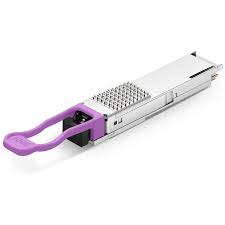Tech
100GBASE-BX80 BiDi – A Practical Path to Long-Haul 100G

The Long-Distance Challenge
One of the biggest hurdles in scaling to 100G is distance. Inside a data center, you can throw in QSFP28 SR4 modules and call it a day. Out in the field, between offices or across a metropolitan ring, things are more complicated. Fiber costs, equipment costs, and the need for reliable uptime all come into play. That’s where the 100GBASE-BX80 BiDi solution earns its relevance. It doesn’t try to solve every optical networking problem but instead focuses squarely on a niche: long-reach 100G Ethernet over a single fiber strand up to 80 kilometers.
Why BiDi Matters
BiDi optics may sound like a clever hack, but in practice they solve very real problems. Fiber is not always abundant, and in many older metropolitan networks, every new connection comes with significant leasing fees. By transmitting upstream and downstream on different wavelengths over one strand, BX80 cuts those costs immediately. And because it’s Ethernet-based, it integrates smoothly with routers and switches that already speak 100G data rate without requiring additional transponders.
Technical Backbone
100GBASE-BX80 modules generally use a transmit wavelength around 1270 nm and a receive wavelength around 1330 nm, or vice versa, depending on the pair. This design ensures clear separation of signals, even over long distances. Combined with FEC, robust laser diodes, and precise receiver sensitivity, the modules deliver reliable 100G transmission where traditional optics would fall short. They often come in QSFP28 form factors, making them hot-pluggable and compatible with a wide range of switching platforms.
Example Deployments
A common scenario is inter-data center links across cities. For example, cloud providers or colocation companies often need direct, high-speed connections between facilities located 50 to 70 kilometers apart. BX80 fits this use case without requiring a full DWDM setup. Similarly, enterprises with regional headquarters can extend their backbone connectivity using BX80, cutting both operational costs and deployment complexity.
Pros and Cons in the Field
From a practical standpoint, BX80 optics offer an attractive combination of high speed and long reach. They’re not the cheapest modules on the market, but when you factor in the reduced need for fiber or external equipment, the overall economics often come out positive. On the flip side, operators need to watch power budgets carefully, as the modules consume more wattage than short-reach options. Additionally, fiber quality must be monitored more closely, since imperfections become more noticeable over long spans.
Future Outlook
As 400G and even 800G technologies begin to move from lab to deployment, BX80 may not stay the top of the line forever. But in practical terms, many organizations will continue to run 100G networks for years to come, and BX80 fills a critical role in bridging that gap. It represents a balance between raw performance and pragmatic design, offering a path forward for those who need more than LR4 but less than a full-blown optical transport system.
-

 Celebrity2 months ago
Celebrity2 months agoEvan Whitesell: Rising Star Linked to Lauren Sánchez
-

 Celebrity2 months ago
Celebrity2 months agoApi Robin: The Quiet Force Supporting Celeste Barber
-

 Celebrity3 months ago
Celebrity3 months agoJamie White-Welling: Bio, Career, and Hollywood Connection Life with Tom Welling
-

 Celebrity3 months ago
Celebrity3 months agoTrey Kulley Majors: The Untold Story of Lee Majors’ Son
















